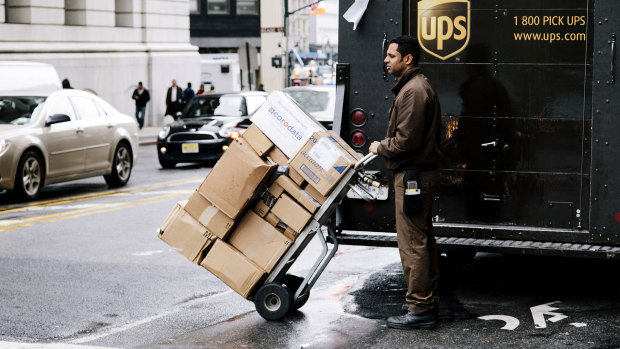
More than a decade ago, winter storms struck large parts of the United States around Christmas, causing huge delays in the delivery of gifts as United Parcel Service Inc. (UPS) -), FedEX, and United States Postal Service (USPS) drivers struggled to get through the ice, wind, and snow.
In America, not getting Christmas presents on time is a mortal sin. So retailers like Amazon Inc. (AMZN) -), Walmart Stores Inc. (WMT) -), Best Buy Company Inc. (BBY) -), and Target Corporation (TGT) -) started to seriously re-evaluate their dependence on such carriers.
The effort took on greater significance over the ensuing years. E-commerce sales continued to boom, especially during the pandemic. And retailers upped the ante by offering two day, one day, and even one hour delivery service.
To lessen their reliance on outside carriers, major retailers have essentially built their own “last mile” delivery systems, employing a combination of on-demand drivers, cheaply built delivery depots, small business workers, and even drones to get packages to consumers.
Now we’ll see if those investments pay off as UPS faces a major strike that could cripple the flow of online goods across the country.
Using Stores as Delivery Points
In general, retailers seemed better prepared to manage big delivery disruptions, especially compared to those winter storms a decade ago.
“Our experienced teams have successfully navigated through supply chain disruptions in the past and are confident in their ability to flex and pivot as needed,” Macy’s Inc. (M) -) spokesperson Christopher Grams told TheStreet.
“In the event of a strike, we have contingency plans in place to mitigate any impact to our customers,” he said.
For retailers, the first major pivot away from UPS and other carriers was to use their existing stores as mini-warehouses.
In the past, retailers built distribution centers just for e-commerce sales. But they soon realized that stores could fill those orders. Plus, their many stores were located a lot closer to where consumers live and work, offering retailers a chance to penetrate deeper into metropolitan markets.
Target has been especially aggressive about using its stores to drive e-commerce sales. In addition to buy online, pick up in store, Target shoppers can retrieve their orders on the curb without leaving their cars.
But for those who want delivery, Target has heavily invested in its last mile system. In 2017, the retailer paid $550 million to acquire Shipt, a company which also deploys contractors to personally shop and deliver food from Target stores on the same day. Shipt also delivers from CVS, OfficeMax, and Sephora.
The company is developing a model that will allow the retailer to not only reduce the burden of next day delivery on stores but also extend the company’s reach deeper into faster growing suburban areas.
In the Atlanta market, the retailer built what it calls a Target Last Mile Delivery (TLMD) extension, a bare bones sortation center in which workers hand off online orders that originated from stores to Shipt drivers.
The company declined comment for this story.
Reducing Reliance On UPS
Walmart also uses the size and reach of its supercenters and smaller format Neighborhood Centers to drive e-commerce sales, especially in hard to reach rural areas and denser urban regions.
The company has been leaning harder into its partnership with the Spark Driver platform, an Uber-like service that allows independent drivers to deliver online orders from stores and warehouses to people’s homes. The retailer tripled its number of pickup points to 15,000 in fiscal year 2023 from 5,000 the prior year.
Amazon does not operate physical stores. So the company in the past has had to rely more heavily on UPS to deliver packages.
But in recent years, Amazon and UPS have been loosening their once symbiotic relationship. And the e-commerce giant has been using its considerable resources to build out its own air cargo fleet and network of Amazon-branded delivery vehicles and drivers.
The company is still experimenting with other methods of delivery, including drones and self-driving vehicles. Amazon is also recruiting thousands of local businesses, ranging from florists and bodegas to coffee shops and apparel stores, to store and deliver packages to consumers.
Moreover, Amazon has reconfigured its entire supply chain in a way that might reduce its reliance on UPS and other carriers for long haul deliveries.
Until now, Amazon operated a centralized system in which large fulfillment centers would ship online orders to regional and local delivery stations.
But if a fulfillment center nearest to the customer ran out of the product, the company would have to ship merchandise from other fulfillment centers scattered far across the country. The result was increased delivery times and costly delays.
The company has reverted to a more regional network, where “shorter travel distances mean lower cost to serve, less impact on the environment, and customers getting their orders faster,” CEO Andy Jassy wrote in his letter to shareholders.
Bottom line is that a UPS strike in the past might have been catastrophic to retailers. But thanks to investments in last mile delivery, retailers are poised to ride out any potential storm.







